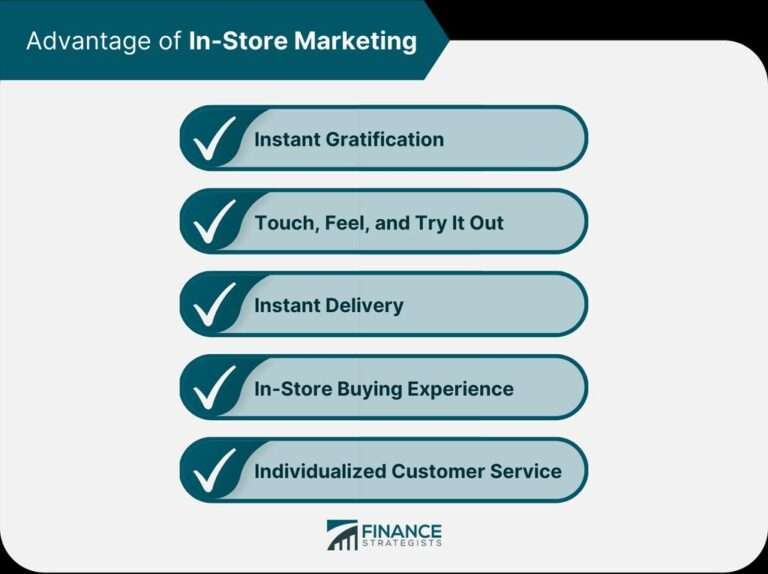Growth Marketing vs Demand Generation
Overview
Definition of Growth Marketing
Growth marketing is a comprehensive approach to driving sustainable business growth through various strategies and tactics. It focuses on optimizing every stage of the customer journey, from acquisition to retention, with the goal of maximizing revenue and long-term customer value. Unlike traditional marketing, growth marketing takes a data-driven and iterative approach, constantly testing and refining strategies to achieve scalable growth. It leverages a combination of marketing channels, technologies, and analytics to identify and capitalize on growth opportunities. Demand generation is a key aspect of growth marketing, as it involves creating awareness and generating interest in a company’s products or services. By implementing targeted campaigns and personalized messaging, growth marketers aim to attract and convert high-quality leads into loyal customers.
Definition of Demand Generation
Demand generation is a strategic marketing approach that focuses on creating awareness and interest in a company’s products or services. It aims to generate demand and attract potential customers through various marketing tactics, such as content marketing, social media marketing, and advertising. Unlike lead generation, which specifically focuses on capturing and qualifying leads, demand generation takes a broader approach to engage and nurture prospects throughout the buyer’s journey. By creating valuable and relevant content, optimizing landing pages, and leveraging targeted advertising campaigns, demand generation aims to drive brand awareness, generate quality leads, and ultimately increase sales.
Key Differences between Growth Marketing and Demand Generation
The key differences between growth marketing and demand generation lie in their objectives and approaches. Growth marketing focuses on driving sustainable and scalable growth by identifying and capitalizing on opportunities for expansion. It emphasizes customer retention, product development, and long-term value creation. On the other hand, demand generation aims to generate immediate interest and demand for a product or service. It focuses on creating awareness, capturing leads, and driving short-term sales. While growth marketing takes a holistic and strategic approach, demand generation is more tactical and focused on immediate results. Both strategies are essential for business success, but they cater to specific needs at different stages of the customer journey.
Strategies
Growth Marketing Strategies
In order to effectively implement growth marketing strategies, it is crucial to understand your target audience and their needs. One strategy is to focus on personalized marketing campaigns that tailor messaging and content to specific segments of your audience. This can be achieved through data analysis and segmentation, allowing you to create highly targeted campaigns that resonate with your audience. Another important strategy is to optimize your website and landing pages for conversion. By conducting thorough user research and implementing A/B testing, you can identify areas for improvement and make data-driven optimizations to increase conversion rates. Additionally, leveraging social media platforms and influencer marketing can help you reach a wider audience and generate brand awareness. It is important to continuously analyze and measure the success of your growth marketing strategies, using key metrics such as customer acquisition cost, customer lifetime value, and conversion rates. By constantly iterating and optimizing your strategies based on data insights, you can drive sustainable growth for your business.
Demand Generation Strategies
Demand generation strategies focus on creating awareness and interest in a company’s products or services. These strategies aim to generate leads and drive customer acquisition. Brand awareness is a key component of demand generation, as it helps to establish a company’s reputation and credibility in the market. Some common demand generation strategies include content marketing, social media advertising, email marketing, and events. These strategies often involve creating valuable and educational content, engaging with target audiences on social media platforms, nurturing leads through email campaigns, and hosting events to showcase products or services. By implementing effective demand generation strategies, companies can attract potential customers and build a strong pipeline of leads for their sales teams.
Overlap and Synergy between Growth Marketing and Demand Generation
In the world of digital marketing, the overlap and synergy between growth marketing and demand generation are becoming increasingly evident. Both strategies aim to drive business growth and generate revenue, but they approach it from different angles. Growth marketing focuses on long-term sustainable growth by implementing strategic tactics and leveraging data-driven insights. On the other hand, demand generation focuses on short-term lead generation and creating immediate demand for a product or service. While growth marketing takes a holistic and comprehensive approach, demand generation is more focused and tactical. However, it is important to note that these two strategies are not mutually exclusive. In fact, they can work together to create a powerful marketing engine that drives both short-term results and long-term growth. By combining the strategic necessity of growth marketing with the immediate impact of demand generation, businesses can achieve sustainable growth while meeting their immediate revenue goals.
Metrics
Key Metrics for Growth Marketing
When measuring the success of growth marketing efforts, there are several key metrics to consider. One important metric is customer acquisition cost (CAC), which measures the cost of acquiring each new customer. Another metric is customer lifetime value (CLTV), which calculates the total revenue generated by a customer over their lifetime. Additionally, engagement metrics such as click-through rates, conversion rates, and time spent on site provide insights into how well a growth marketing campaign is engaging potential customers. It is crucial to track these metrics and analyze the data to optimize growth marketing strategies and drive business growth.
Key Metrics for Demand Generation
In demand generation, the key metrics revolve around lead generation and customer acquisition. It is crucial to track the number of leads generated, as well as the cost per lead. Additionally, measuring the conversion rate from leads to customers provides valuable insights into the effectiveness of demand generation efforts. Another important metric is the return on investment (ROI) of demand generation campaigns, which helps determine the profitability of acquiring new customers. Lastly, brand awareness plays a significant role in demand generation, as it contributes to the overall success of marketing campaigns. By monitoring metrics related to brand awareness, such as social media engagement and website traffic, marketers can evaluate the impact of their demand generation strategies.
Measuring Success: Comparing Metrics
When it comes to measuring success in growth marketing and demand generation, it is important to consider the key metrics that are specific to each approach. In growth marketing, metrics such as customer acquisition cost (CAC), customer lifetime value (CLTV), and churn rate are crucial in evaluating the effectiveness of campaigns and strategies. On the other hand, demand generation focuses on metrics like lead generation, lead-to-customer conversion rate, and revenue generated. While both approaches aim to drive business growth, the metrics used to measure success may vary. However, it is essential to note that there is often overlap and synergy between growth marketing and demand generation, as they work together to achieve common goals. By comparing and analyzing these metrics, businesses can gain valuable insights into the effectiveness of their marketing efforts and make data-driven decisions to optimize their strategies.
Conclusion
Choosing the Right Approach
After considering the key differences between growth marketing and demand generation, it is crucial to choose the right approach that aligns with your business goals and target audience. Growth marketing focuses on long-term sustainable growth by leveraging data-driven strategies and customer-centric tactics. On the other hand, demand generation aims to generate immediate leads and drive short-term revenue through targeted campaigns and promotional activities. To make an informed decision, assess your current business needs, resources, and timeline. Consider the scalability, cost-effectiveness, and potential ROI of each approach. Additionally, evaluate the level of collaboration and integration required with other teams and departments. By selecting the most suitable approach, you can maximize your marketing efforts and achieve your desired outcomes. To learn more about how Unifire can help you implement growth marketing or demand generation strategies, visit Unifire for a free trial and consultation.
Collaboration and Integration
Throughout this article, we have explored the key differences between growth marketing and demand generation, as well as their respective strategies and metrics. Now, let’s delve into the importance of collaboration and integration between these two approaches. Collaboration is crucial because growth marketing and demand generation can complement each other in driving business growth. By working together, teams can leverage their unique strengths and expertise to create a comprehensive marketing strategy that covers both long-term growth and immediate demand generation. Integration is equally essential as it allows for seamless coordination and alignment of efforts across various marketing channels and initiatives. When growth marketing and demand generation efforts are integrated, companies can maximize their marketing impact and achieve sustainable growth. To fully harness the power of collaboration and integration, organizations should foster a culture of cross-functional collaboration, encourage open communication, and provide the necessary resources and tools for teams to work together effectively. By embracing collaboration and integration, businesses can unlock the full potential of growth marketing and demand generation, driving success and staying ahead in today’s competitive landscape.
CTA: If you want to learn more about how to effectively implement growth marketing and demand generation strategies, check out Unifire. With its powerful tools and insights, Unifire can help you optimize your marketing efforts and achieve exceptional results.
In conclusion, Unifire is the perfect tool for extracting summaries, keywords, and titles from your podcast and repurposing your content. With Unifire, you can save time and effort by automating the process of generating valuable content. Whether you’re a podcaster, content creator, or marketer, Unifire can help you optimize your content strategy and reach a wider audience. Try Unifire today and see the difference it can make for your content!









 العربية
العربية Čeština
Čeština Dansk
Dansk Nederlands
Nederlands English
English Suomi
Suomi Français
Français Deutsch
Deutsch Italiano
Italiano 日本語
日本語 한국어
한국어 Norsk bokmål
Norsk bokmål Polski
Polski Português
Português Русский
Русский Español
Español Svenska
Svenska